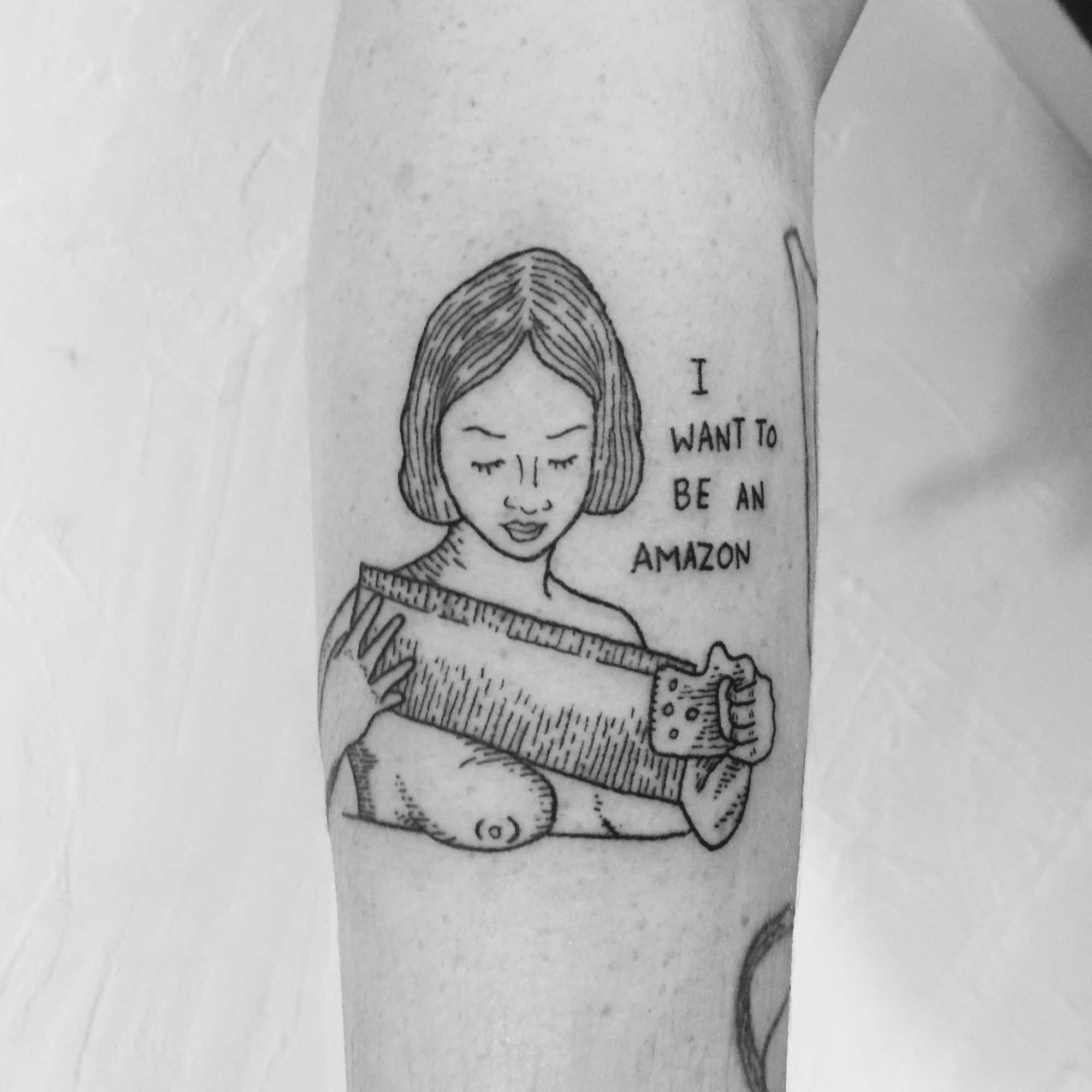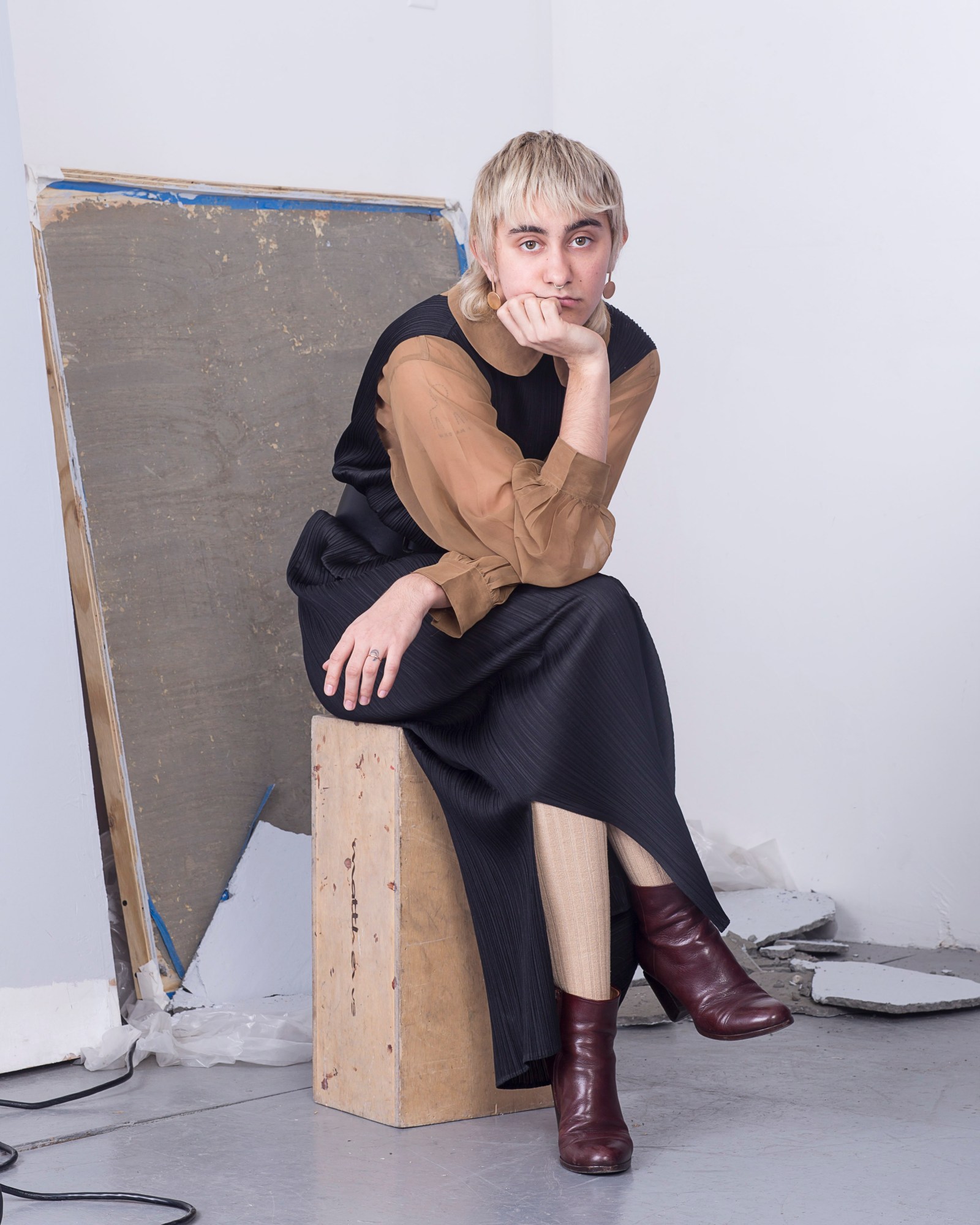Mars Hobrecker isn’t your typical tattoo artist: Rather than pinups of skinny, scantily-clad women, his work features glorious people of all sizes and types. One of the flash sheets he posted on Instagram features an old woman, a female bodybuilder, and a plus-size girl. “When did you last re-examine your idea of beauty?” the Brooklyn-based artist asked in the caption. Mars’s other flash includes a bearded bride, lesbian threesome, and a dick precariously close to a meat grinder (that caption simply read: @grindr). “As queer artists,” explains Mars, who is trans, “I feel we have a responsibility to represent as wide of a range of people as possible.” But it’s not just his content that is unique—it’s his style too. Inspired by his father, who runs a print shop in his native Nova Scotia, Mars’s delicate lines look etched and stamped. “Super gay woodcuts,” he describes. Here, we talk to the 24-year-old artist about his work, how queer people are reshaping tattoo culture, and what still needs to change.
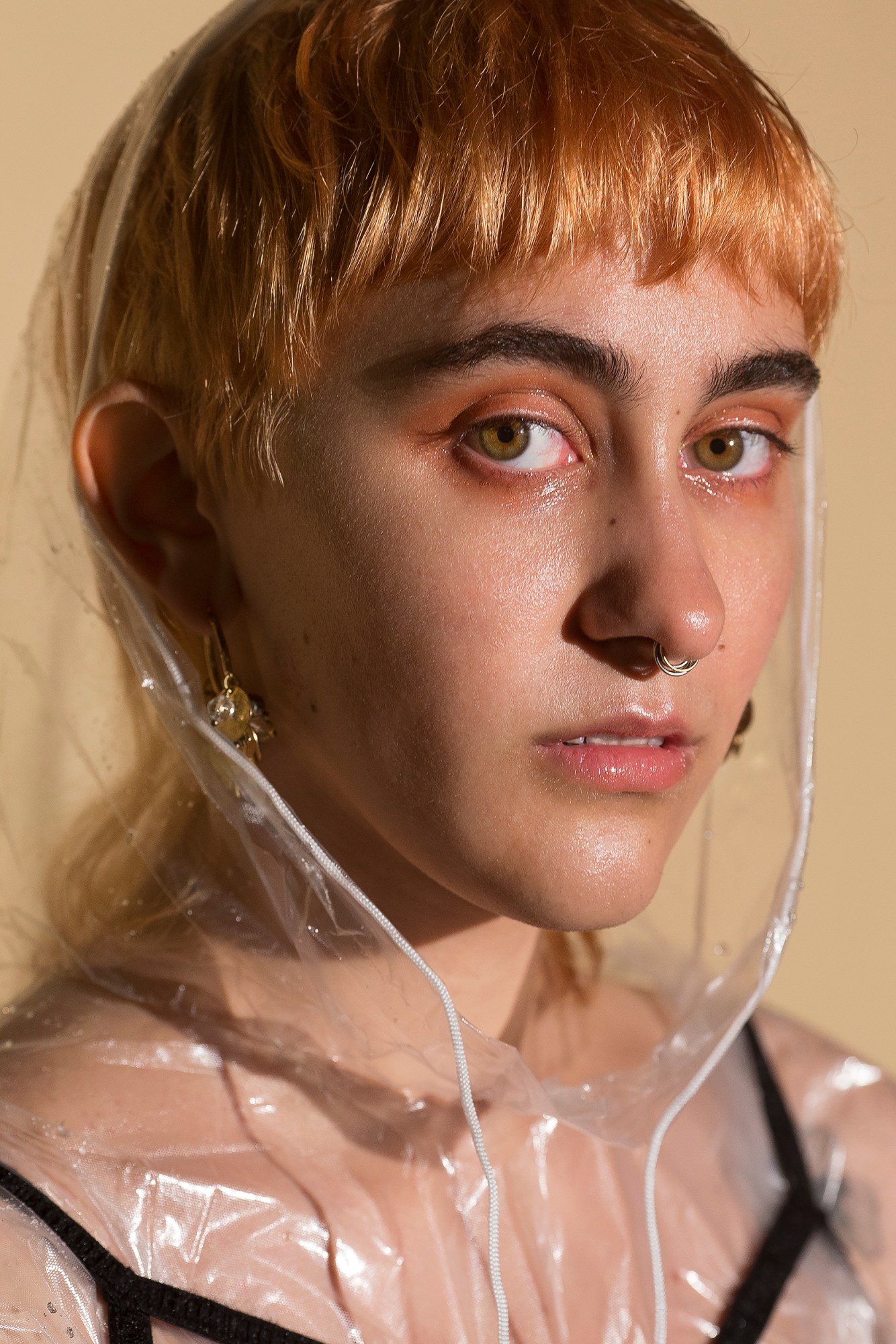
How did you first get into tattooing?
I gave my first tattoo by way of a sewing needle when I was 16. It was definitely bad, and definitely not something I would advise doing now! I didn’t know how to draw for shit (something I really feel hasn’t changed tbh), so all my super early tattoos were like lines and simple shapes; I just taught myself as I went along. By the time I graduated [college], I had completely lost interest in photography, which had been my major, so I sold my camera and bought a tattoo machine on a whim.
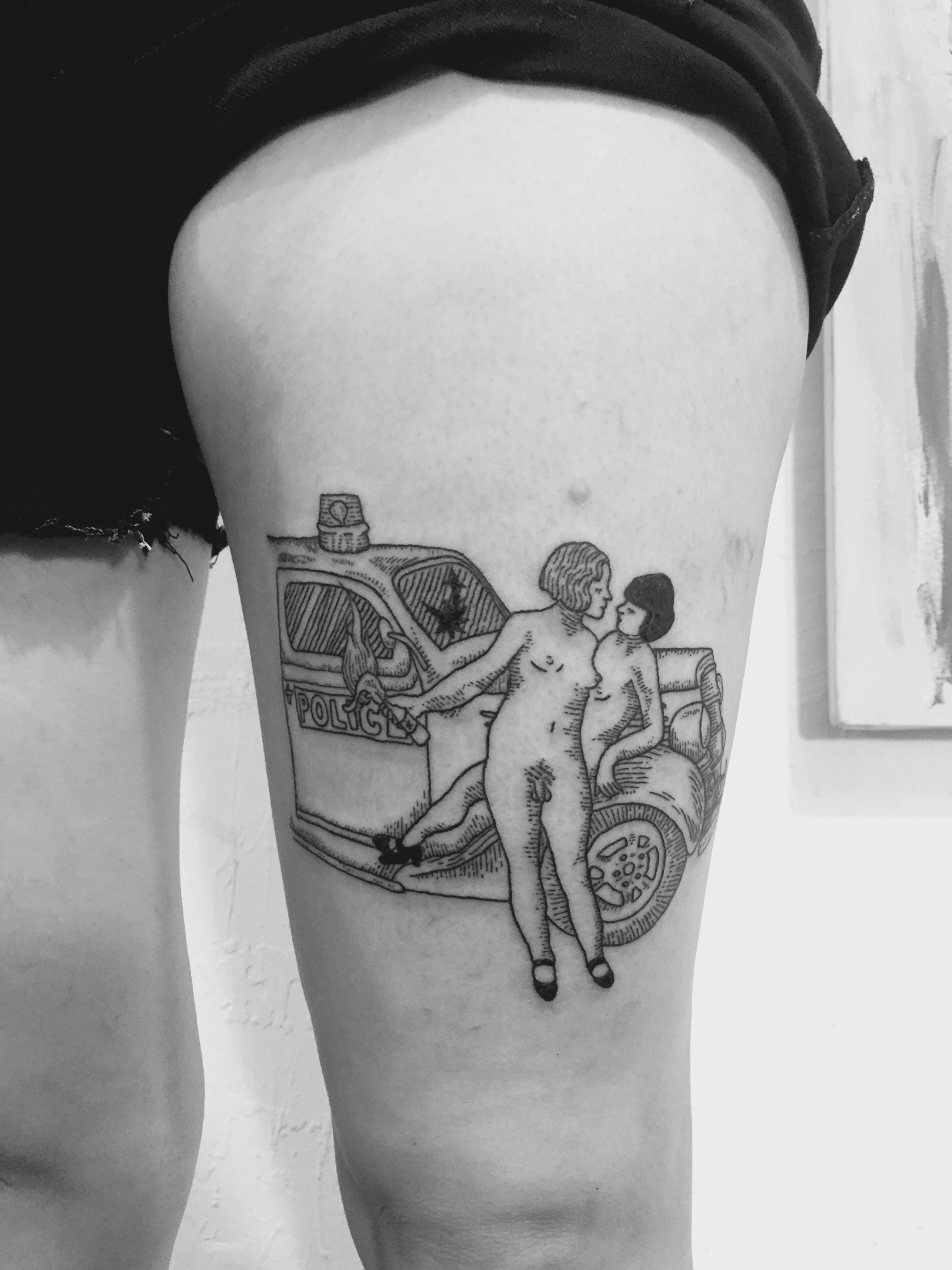
Why is tattooing important to you?
In my experience, it’s definitely all about asserting control over my body, and more recently (now that I primarily get tattooed by trading with other queer artists), I think it’s expanded a bit to connecting with the person who’s performing the tattoo. For me, the ritual of being tattooed is way more important than the image itself.
What do you love most about the queer tattoo community?
I love that it doesn’t feel competitive. Everyone just seems so stoked to see what other folks are doing and promote one another! It’s by far the most nurturing and supportive community I’ve ever been a part of, and it feels really good to be working with people who are expanding and redefining a medium while holding space for anyone new who wants to learn and be a part of it.
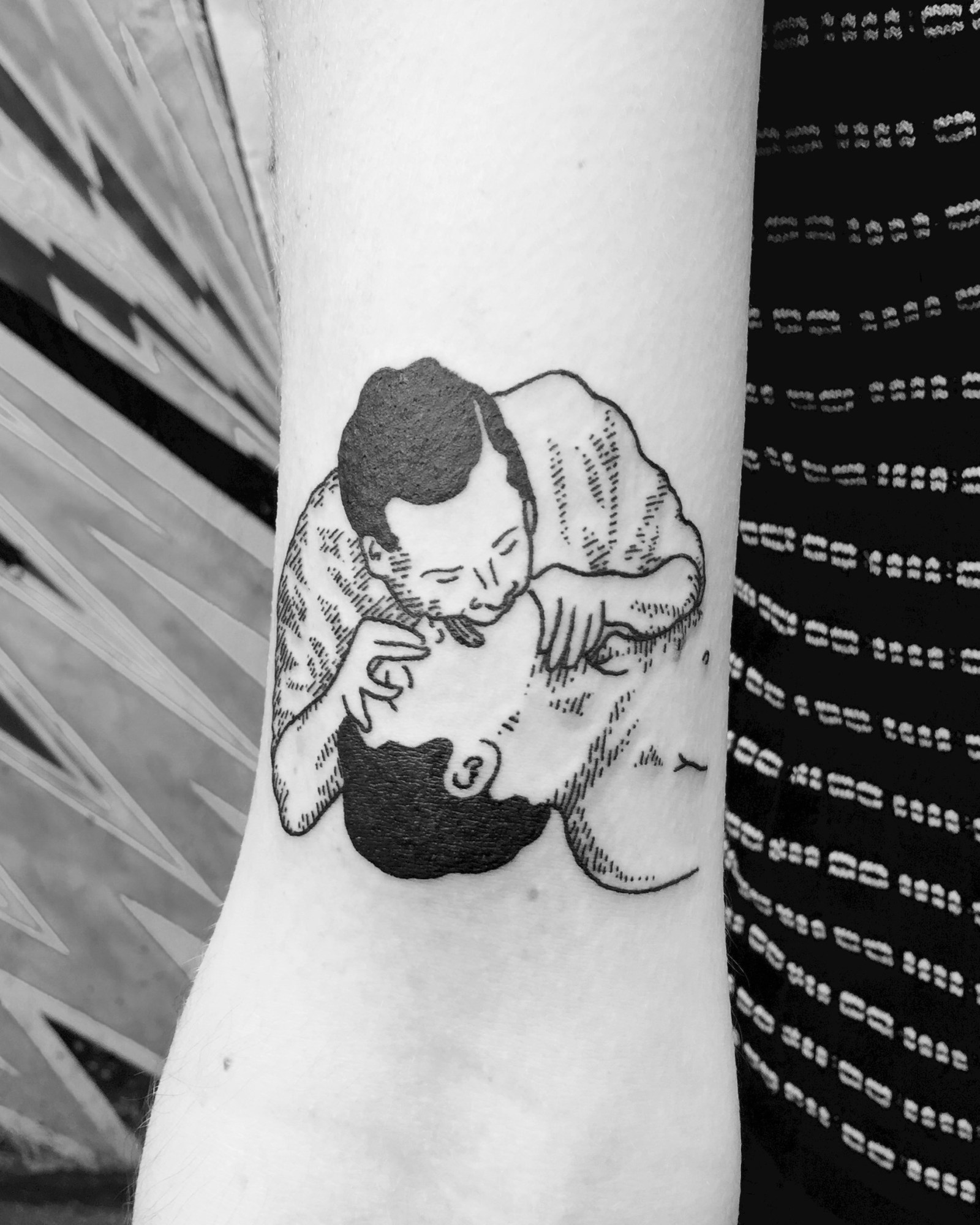
How important is social media to queer tattooing?
Social media has been absolutely instrumental. That’s not to say that without it we still wouldn’t be doing our thing, but being able to find one another online and create a community of artists with similar ideas and values has been a total game changer. I think for a lot of queer people, and anyone else who doesn’t fit to the very narrow image expected of tattooers (straight/white/masc), breaking into the industry can be really difficult. So a lot of us end up being self-taught, and social media has allowed us to promote our work and connect with one another.
How is queer tattooing changing tattoo culture as a whole?
I think that larger tattoo culture is changing because it’s realizing it finally has to! I think lots of traditional shop guys were able to write off alternative artists for a long time… but suddenly, all of these amazing self-taught weirdos are getting recognition and so they’re being forced to pay attention. I definitely think the change is exceptionally slow-going, but at the very least, I think there’s been a serious push for shops to consider artists who learned in non-traditional ways.
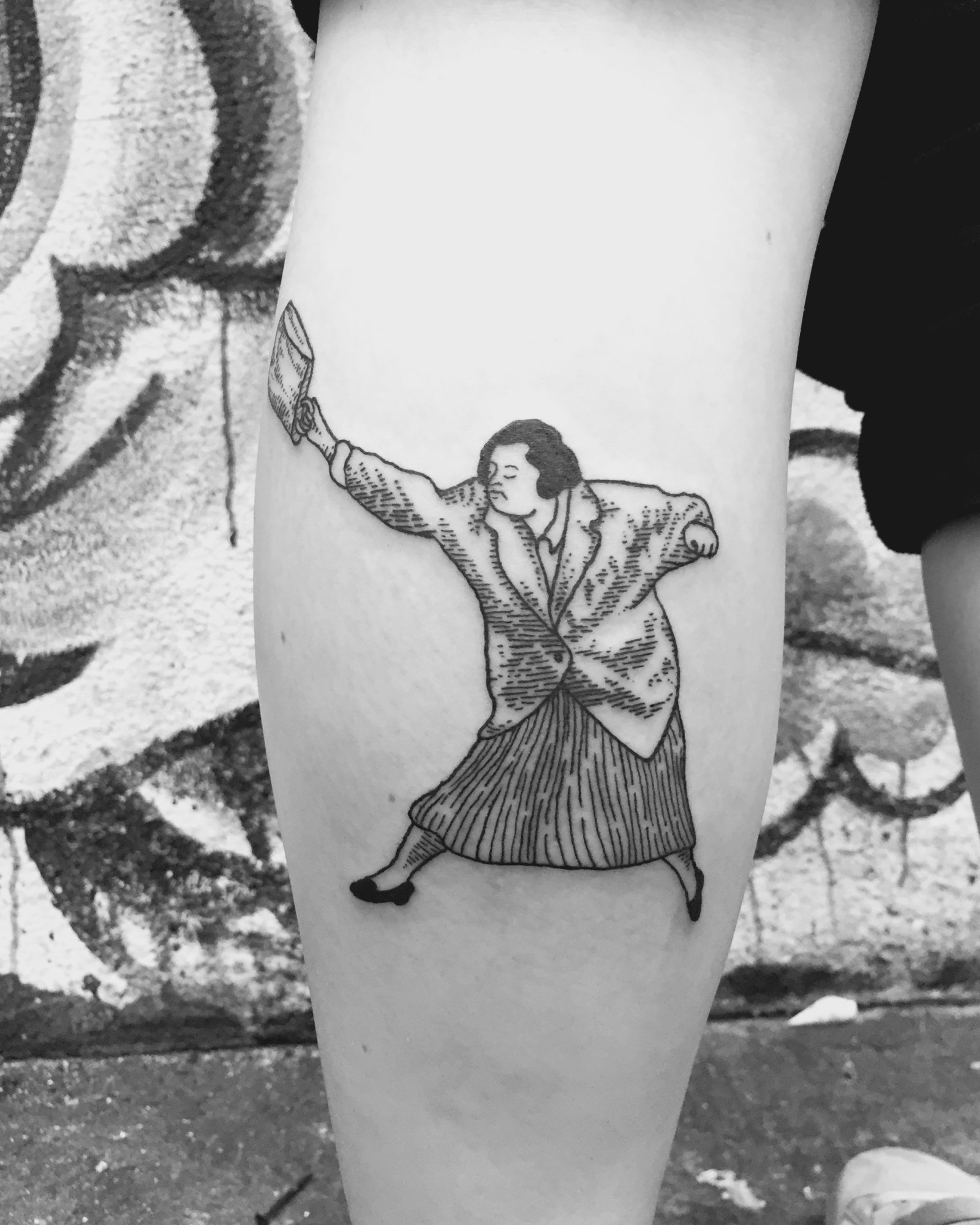
What still needs to change?
As much as I love and adore my little weirdo tattoo bubble, there’s a whole lot that needs to change outside of it. In a culture where artists are still routinely praised for tattooing racist caricatures, representation in imagery is something that really needs to be talked about. I think it’s really easy for tattoo artists to get away with a lot under the guise of an image being “traditional,” or attempting to remove all agency by claiming they were just doing what the client asked for. But, at the end of the day, it’s up to the artist to really think about what they’re perpetuating and just say no. I don’t think I go a single day without seeing a native headdress, highly sexualized geisha or literal blackface caricature by some artist with 50K+ followers being suggested to me on my Instagram explore page, and it’s unacceptable.
That being said, this isn’t an Us vs. Them situation. Even with artists who know better, and have blurbs about appropriation on their websites, representation in imagery gets kind of tricky. The traditional still tends to seep in, just maybe not in such obvious ways. Honestly, I’m just waiting for the day when we can move past conversations of whether it’s cool (as a white artist) to tattoo a sexy native girl on a white dude (it’s not!), and onto more complicated conversations like why are all the girls in your flash skinny and able-bodied?
